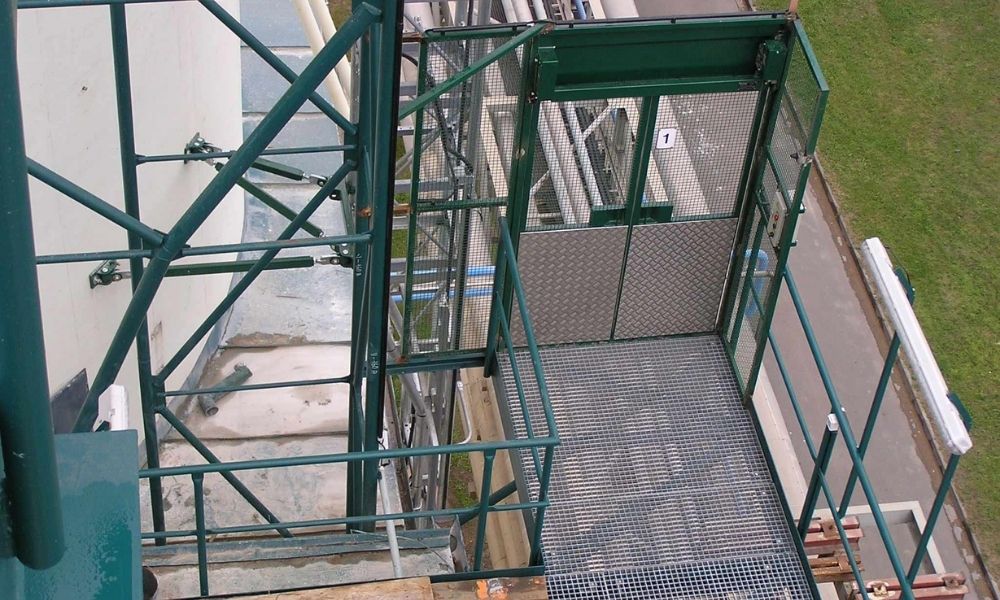Construction hoist enclosures serve as one of the most effective methods for protecting construction hoist workers in hazardous environments. In addition to containing explosions and preventing combustion, they also prevent workers on the landing from accessing the hoistway, further reducing the risk of potential injuries. Hoist enclosures provide such a high degree of safety by relying on a crucial component: high-quality interlocks. To better understand the importance of interlocks on construction hoist enclosures, read on.
What Are Interlocks on a Hoist Enclosure?
Before we address the importance of interlocks on construction hoist enclosures, let’s first touch on what interlocks on a hoist enclosure are specifically. Simply put, interlocks are devices that workers can equip to hoist enclosures to prevent the system from operating unless all gates are in closed positions. They come in different styles. The main types you’ll see are “lock and contact” and “true interlock.” True interlocks are preferable for safety, but not every jurisdiction requires or enforces them.
Why Interlocks Are Essential For Safe Operations
Perhaps the main reason interlocks are essential on construction hoist enclosures is that they prevent sudden hoist movements during dangerous scenarios, such as instances where gates are open. A common cause of accidents during the use of construction hoists is unexpected movement from the hoist platform during the loading or unloading process. Such sudden shifts can have numerous negative effects. For example, a worker using the hoist could get knocked off balance and fall into the hoistway, some equipment could fall out onto another worker, or the moving hoist could trap or kill a worker.
Fortunately, interlocks help safeguard against such risks. Because interlocks prevent the hoist from operating unless workers close all the car gates, landing gates, and hatches, they effectively protect against the sudden movement of construction hoists during the loading or unloading process.
In addition, interlocks on landing enclosures also prevent the gate from opening unless the hoist platform has arrived at the landing. This further prevents any materials or workers from falling out of the hoist, which would result in significant injuries. For these reasons, construction managers should equip all of their landing hoistway enclosures with true interlock gates that aren’t vulnerable to external interference and comply with OSHA and ANSI requirements.
Interlocks in Different States
There may be only one federal code (ANSI 10.4) for construction hoists, but all states, and even municipalities, have their own interpretations and additional regulations. For instance, on a Construction Hoist in Texas or Florida, laws rarely require landing gate interlocks. However, in Boston, Massachusetts, a construction hoist must have “lock and contact” interlocks on the landing gates. In Toronto, Canada, gates must be “true interlock,” which are more strict and safe forms of gate interlock. Every jurisdiction in North America requires some type of interlock on the construction hoist cars’ gates.
At UCEL, we offer exceptional ground and hoistway enclosures for sale, including construction hoist landing gates with or without interlocks. Our factory-made steel ground-enclosures can come complete with true interlock gates for optimum protection. To learn more about our products, contact us today.
